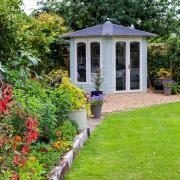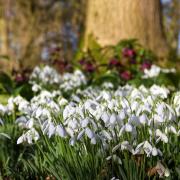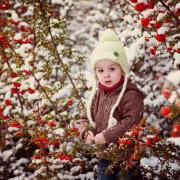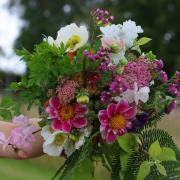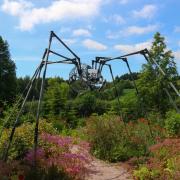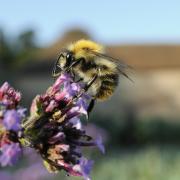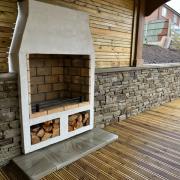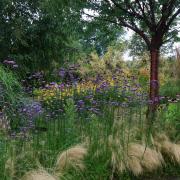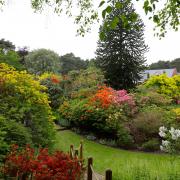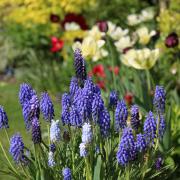Nature experts share their tips on how to turn your garden into a haven for bees

As the days are long and warm, our gardens, green spaces and the countryside beyond are changing fast. The white ‘froth’ of the hedgerow bramble and fruit tree blossom are fading as the first small green fruits appear. Hedge parsley and oxeye daisies are bursting into bloom and there is a constant buzz along the lanes as insects are busy getting their fill.
Honey bees, tree bumblebees, white-tailed and red-tailed bumblebees are feasting on the abundant flowers of hedgerows, verges, heathland, farmland and woodland edges as well as making frequent visits to our gardens – what joy.
The honey bees and bumblebees are the chubby stripy garden visitors which we’re most familiar with. However, here in the UK, there are around 270 species of bees most of which are solitary. Many, like the mining bee build their nests underground, others prefer aerial locations where they often seal their nests with a saliva-like substance, mud, chewed leaves, resin or sections of leaves which they cut with their jaws.
Unfortunately, the story of the bee over the last century has been one of dramatic decline, even leading to some species becoming extinct. This decline is due largely to the way we manage our countryside. The demands on our agricultural industry for cheap food in larger quantities has led to less flowering plants that bees and other pollinators feed on.
These little creatures play a vital role. Not only do they pollinate the flowers in our hedgerows and gardens – providing fruit and seeds for other insects, birds and mammals – they’re also responsible for pollinating many of the crops that produce food for us.
So what can we do to help them? Here’s some tips from Cheshire Wildlife Trust on how we can help solitary bees in our gardens.
Build a bee hotel
Unlike the familiar bumblebee and honey bee, most of our bees do not make colonies but are solitary. The female spends most of her life searching for suitable nesting sites. Some species will nest in holes in the ground, while others will look for old beetle holes or hollow stems in which to lay their eggs. If you can provide a suitable home, these bees will come to you.
You will need
• An untreated wooden plank, at least 10 cm wide.
• Plenty of hollow stems of different diameters (including the bees’ preferred 3-5 mm), such as bramble, reed or bamboo.
• Saw, drill, screws and secateurs.
• A mirror fixing to hang the finished nest up.
Building your bee hotel
• Cut the plank into four to make a rectangular frame the stems will sit inside.
• Drill guide holes for the screws (to stop the wood splitting) and assemble the frame.
• Snip your stems into lengths to fit the frame (as wide as the plank), discarding any bent or knobbly ones. It’s a good idea to include some really big stems (cut with a fine saw), even though they’re no use to the bees; they speed up the assembly stage, look attractive and help shelter lacewings and ladybirds over winter.
• Lay your frame on a tilted surface and carefully pack it with stems. Only as you add the final few does the whole thing suddenly lock solid.
Make small changes in your garden to connect with nature
Power pollinators
Many of our prettiest insects feed on nectar so need flowering plants for their survival. Butterflies, moths, bees and hoverflies all need sources of nectar and pollen to thrive. As they travel from flower to flower, they also pollinate them, enabling them to set seed or bear fruit. Setting up a nectar café not only benefits your local wildlife but allows you to enjoy a beautiful display of flowers, buzzing bees and fluttering butterflies.
Setting up your nectar café
Choose a sheltered sunny spot. Place each plant in groups or drifts so the colour and scent are easy to detect.
Prolong the flowering season – select plants so you have a show of flowers from early spring to late autumn
Choose flowers with a simple (often flat) structure, like old cottage varieties, as they are the easiest for insects to feed from.
Remember to provide a night-time feast for moths by planting some night-scented flowers like honeysuckle and evening primrose.
Add herbs to the mix as they are highly attractive to insects, or design a dedicated herb garden.
For more wildlife, walks and inspirations on the great Cheshire outdoors visit the Cheshire Life Facebook page.






